The Western Ghats are a globally recognized repository of biological diversity for our planet. We know very little about most species found here, particularly the ecologically sensitive and spectacularly beautiful 179 amphibians. Astonishingly, 87% of all Western Ghats frogs are endemic and found nowhere else on the planet. Our collaborative research project with Drs Paul Robbins and Ashwini Chhatre examining biodiversity in production landscapes of Ghats unearthed some spectacular amphibians in 2013.
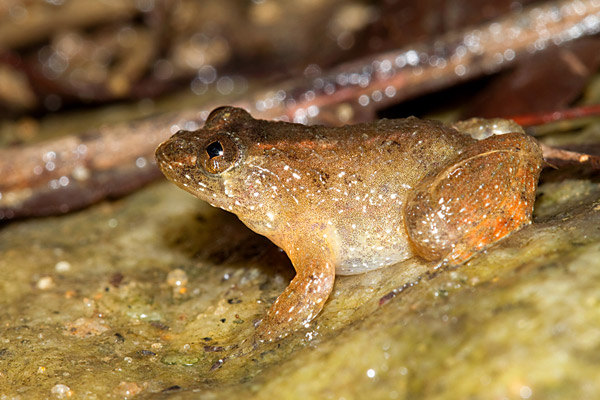
Nyctibatrachus kempholeyensis. Photo by: Shashank Dalvi/Krithi Karanth/CWS.
Lost to science for almost 75 years and rediscovered recently, Nyctibatrachus kempholeyensis was first described by the legendary Indian herpetologist C.R. Narayan Rao in 1937 and can be recognized by their distinct cricket like call.

Rhacophorus lateralis. Photo by: Shashank Dalvi/Krithi Karanth/CWS.
Rhacophorus lateralis was rediscovered in 2000 and is thought to be extremely localized. We observed more than 200 individuals of this species in a pond.
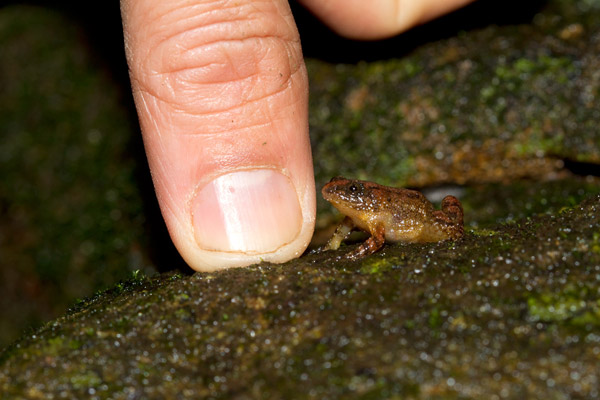
Nyctibatrachus minimus. Photo by: Shashank Dalvi/Krithi Karanth/CWS.
Nyctibatrachus minimus is the smallest known frog in India.
Exhibiting interesting behavior from foot flagging to gliding, frogs in the Ghats leave much to be discovered by scientists and naturalists.
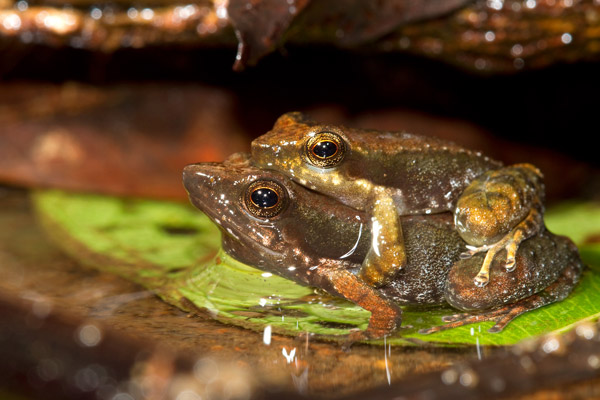
Micrixalus species. Photo by: Shashank Dalvi/Krithi Karanth/CWS.
The foot flaggers Micrixalus species found typically in shallow fast-flowing streams, are thought to use “foot flagging” to communicate when vocalizations are drowned out by water flow.
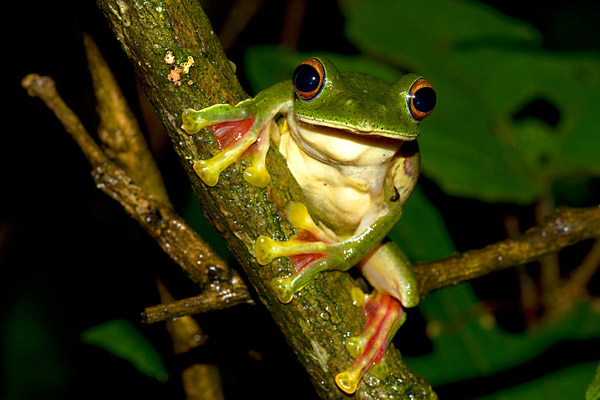
Rhacophorus malabaricus. Photo by: Shashank Dalvi/Krithi Karanth/CWS.
The gliding abilities of Rhacophorus malabaricus aided by long skin between their fingers allow these frogs to cover distances of 10 feet in one leap! They also build foam nests and we observed interesting behavior such as cannibalism among tadpoles.
Many of these amphibians are strikingly beautiful and extremely adaptable.
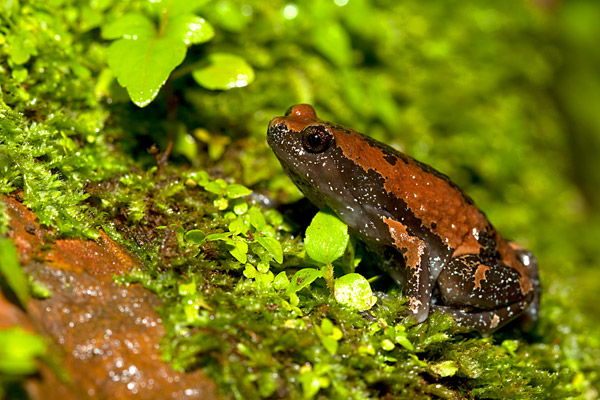
Ramanella trangularis. Photo by: Shashank Dalvi/Krithi Karanth/CWS.
With its bright colors and listed as Endangered, Ramanella trangularis was seen to be using strategic locations such as crevices and tree holes to amplify its calls.
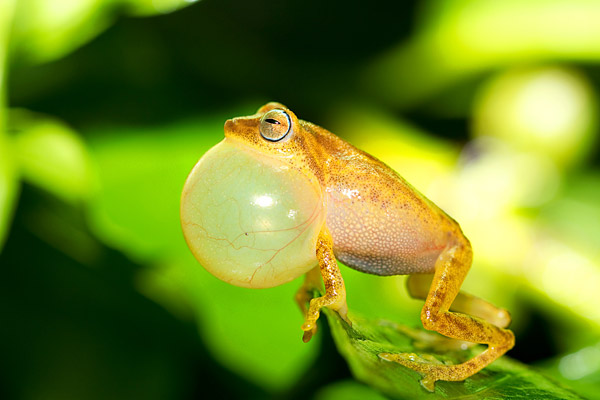
Rarchestes luteolus. Photo by: Shashank Dalvi/Krithi Karanth/CWS.
Raorchestes luteolus also known as the blue-eyed bush frog is common to the Ghats.

Raorchestes glandulosus. Photo by: Shashank Dalvi/Krithi Karanth/CWS.
Some species such as Raorchestes glandulosus come in a range of colors often all found in one location.
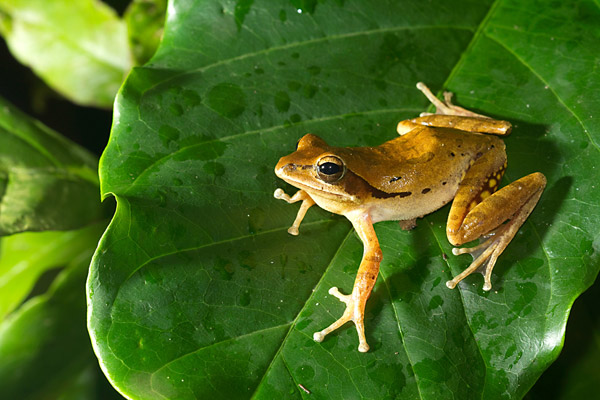
Polypedates maculatus. Photo by: Shashank Dalvi/Krithi Karanth/CWS.
Polypedates maculatus can adopt lighter skin colors and secrete mucus to regulate moisture loss.
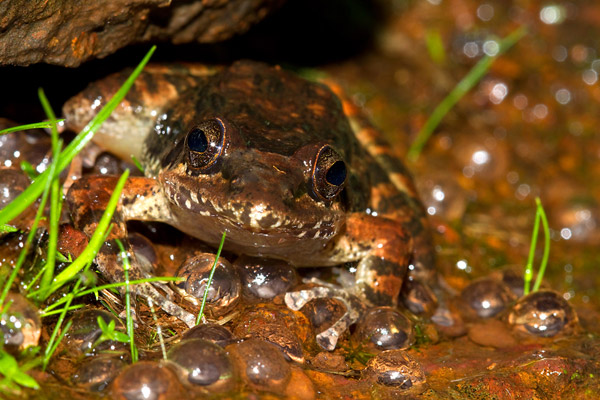
Indriana species with eggs. Photo by: Shashank Dalvi/Krithi Karanth/CWS.
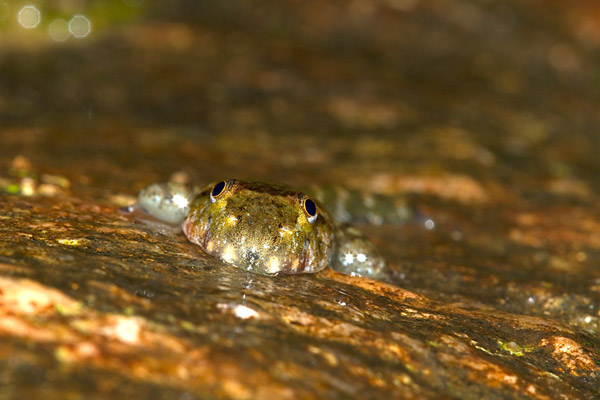
Indriana tadpole. Photo by: Shashank Dalvi/Krithi Karanth/CWS.
Many of these frogs display unique abilities in building nests and laying egg clutches such as Indirana species.
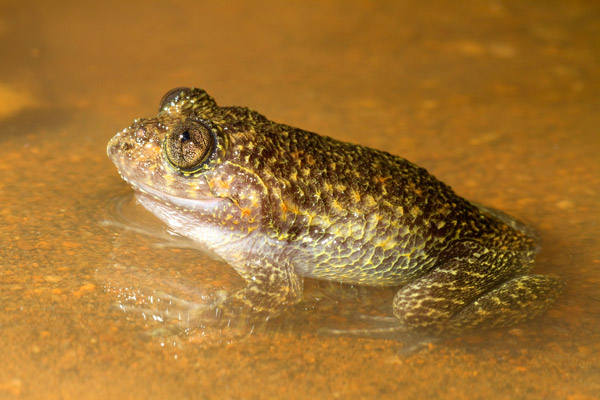
Nyctibatrachus grandis. Photo by: Shashank Dalvi/Krithi Karanth/CWS.

Nyctibatrachus dattatreyaensis. Photo by: Shashank Dalvi/Krithi Karanth/CWS.
And we are still discovering new species including Nyctibatrachus grandis (with its owl-like call) whose males defend egg clutches rather aggressively, and Nyctibatrachus dattatreyaensis only found in a 30 sq km of the entire 160,000 sq km Ghats.
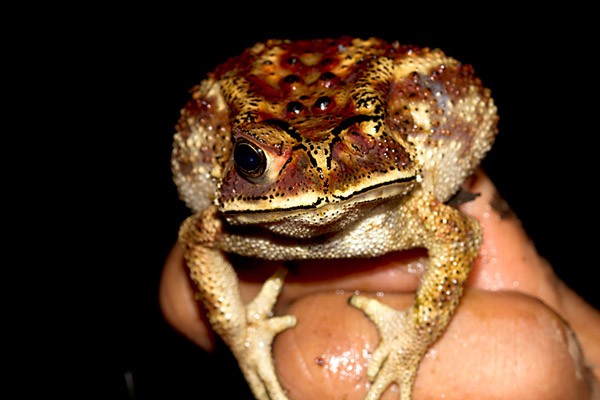
Duttaphrynus melanosticus. Photo by: Shashank Dalvi/Krithi Karanth/CWS.
Unfortunately, most of these endemic species are threatened by range of human activities, resulting in fragmentation and disruption of habitat quality that they are particularly sensitive to, causing visible deformities. We observed deformities including one in Duttaphrynus melanosticus.
We were able to find many amphibians in unprotected and heavily human-used habitats. We believe there is a urgent need for immediate investments in improving the scientific understanding and conservation efforts focused on these environmentally sensitive flagships of the Western Ghats.
Related articles

(04/22/2013) The misty mountains of the Western Ghats seem to unravel new secrets the more you explore it. Researchers have discovered two new frog genera, possibly restricted to rare and threatened freshwater swamps in the southern Western Ghats of India. The discoveries, described in the open-access journal Zootaxa, prove once again the importance of the mountain range as a biodiversity hotspot.
Looking beyond the hundred legs: finding new centipedes in India requires many tools
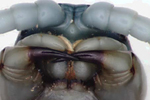
(04/08/2013) A small, boneless creature, that lives underground, with a “hundred” legs, and a rather powerful sting; some of these creatures are drab, but some are so beautiful and brightly colored that they can startle. Centipedes. There is more to a centipede than its many legs, and its habit of darting out of dark places. One of the first lifeforms to turn up on land, some centipede fossils date back to about 450 million years ago. They have been evolving steadily since, with some estimates showing about 8,000 species today. Not even half of these species have been taxonomically described.
Photographers threatening the already-abused slender loris
-Arun-Kanagavel.150.jpg)
(03/12/2013) Caught in a beam of torchlight, the eyes of the slender loris reflect back a striking glow. In an effort to better understand these shy, nocturnal primates, a team of researchers set out to the Western Ghats of India. The resulting paper: Moolah, Misfortune or Spinsterhood? The Plight of the Slender Loris (Loris lydekkerianus) in Southern India was published in the Journal of Threatened Taxa in January of 2013. Forest walks and interviews with the Kani people, who live in close proximity to the lorises, supported evidence of a surprising new threat to the lorises: photographers.
Livelihoods depend on the environment in the Western Ghats
(09/27/2012) In the Uttar Kannada district of the Western Ghats, the livelihood of the average individual depends largely on the well being of the environment. Six months ago, before large-scale mangrove planting of the area, if someone were to walk through the banks of the mangroves in the Western Ghats he would see many fishermen casting their long nets and wires, time and time again noticing pieces of trash such as plastic grocery bags tangled in the nets.
Recommendations to save India’s Western Ghats creates political stir

(08/20/2012) A massive expert panel report on the conservation of the Western Ghats has caused a political stir in India. The report, headed by noted ecologist Madhav Gadgil, recommends that the government phase out mining projects, cancel damaging hydroelectric projects, and move toward organic agriculture in ecologically-sensitive sections of the Ghats. The report, which was leaked after the government refused to release it, has yet to be implemented. Recently dubbed a UNESCO World Heritage Site, the Western Ghats is one of India’s largest wildernesses and home to thousands of species, many found no-where else.
Poaching results in elephant gender imbalance in Indian park
(07/09/2012) Scientists have undertaken a new census of Asian elephants (Elephas maximus) in India’s Biligiri Rangaswamy Temple Tiger Reserve (BRT) following almost 30 years of sustained poaching. Estimating that the park contains four female elephants for every male, the scientists warn in a new study in mongabay.com’s open access journal Tropical Conservation Science that this gender imbalance threatens the population. Poachers target male Asian elephants for their tusks, generally leaving females untouched.
India’s Western Ghats rainforest declared UNESCO World Heritage Site
(07/03/2012) India’s Western Ghats, considered one of the richest biodiversity hotspots in the world, has been dubbed a UNESCO World Heritage Site. In total, 39 different sites in the tropical rainforest—home to Asian elephants, Bengal tigers, lion-tailed macaques, and thousands of other species—have made it under the listing.